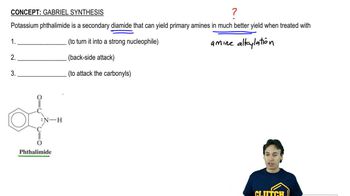Textbook Question
What alkyl bromide would you use in a Gabriel synthesis to prepare each of the following amines?
a. pentylamine
317
views
 Verified step by step guidance
Verified step by step guidance Verified Solution
Verified Solution



 4:53m
4:53mMaster General Reaction with a bite sized video explanation from Johnny Betancourt
Start learning